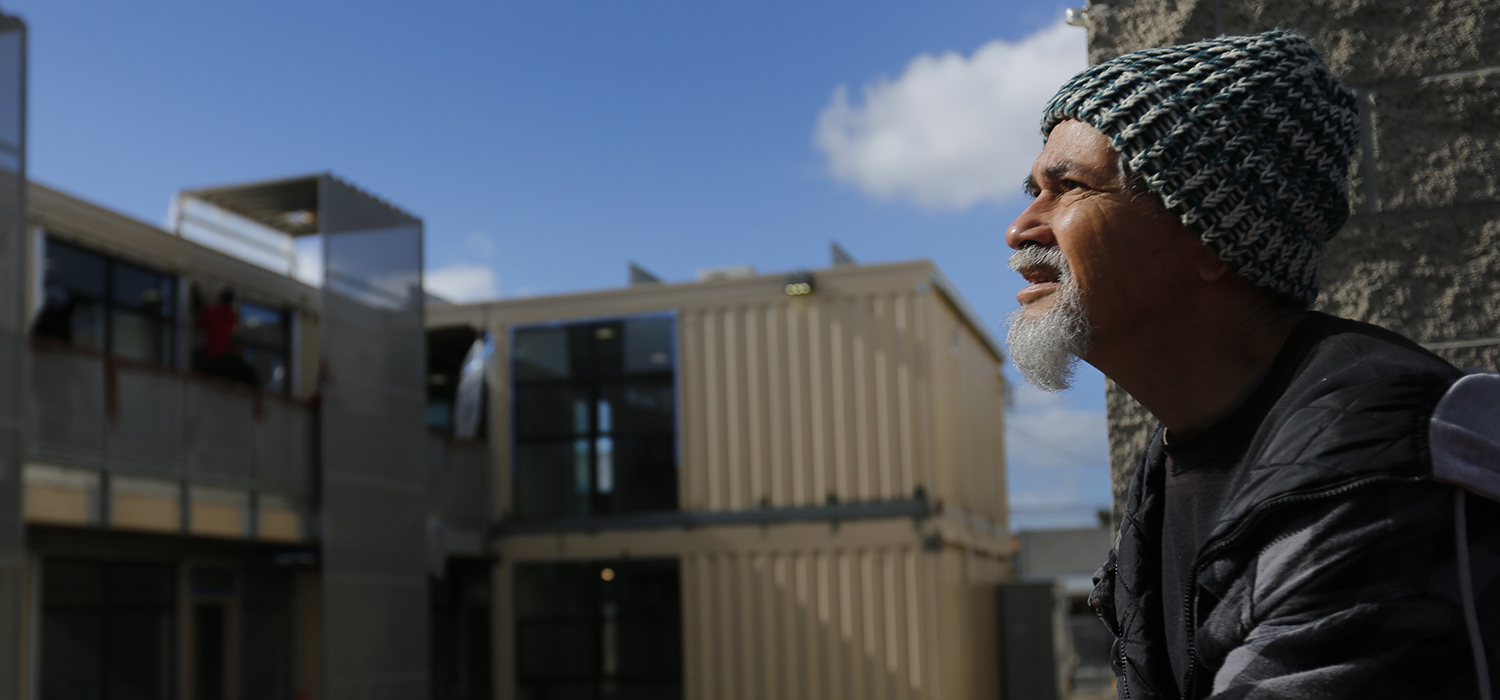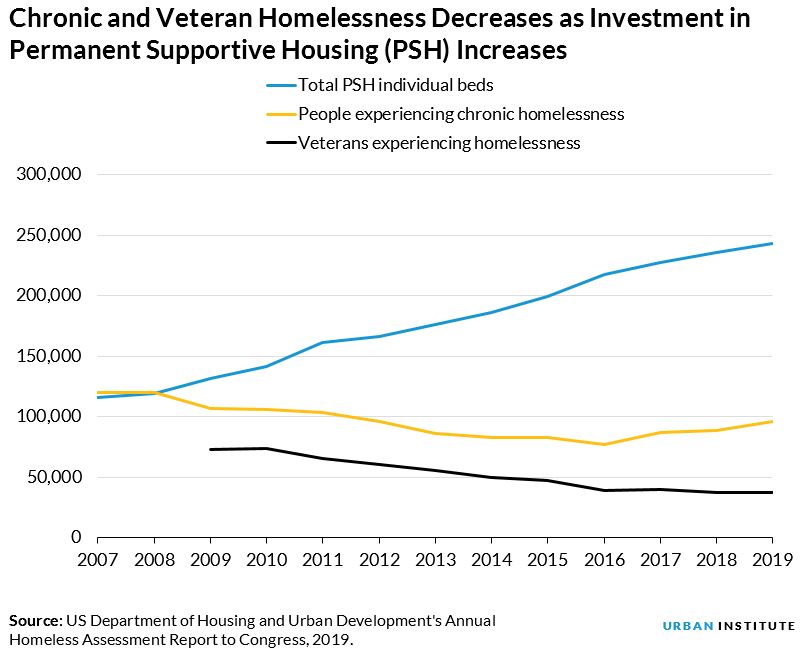
<p>Previously homeless Army veteran Kenneth Salazar checks on the construction progress at Potter's Lane in Midway City, CA on March 17, 2017. Potter's Lane is billed as the nation's first multi-family housing development built with recycled shipping containers to provide permanent supportive housing for homeless veterans. Photo by Allen J. Schaben / Los Angeles Times via Getty Images.</p>
Recent headlines have placed homelessness, especially in high-cost places like San Francisco, at the center of partisan debates. Lately, these conversations have overlooked evidence that shows current public policy, namely the Housing First approach, can effectively end homelessness.
From 2009 to 2019, veteran homelessness decreased by 50 percent. And from 2007 to 2019, chronic homelessness, long-term or repeated homelessness among people with disabilities, decreased by 20 percent. These decreases did not happen by chance.
The decreases are partly the result of placing people in permanent supportive housing (PSH). PSH is a Housing First intervention that provides housing assistance without preconditions or service participation requirements and engages participants in individually tailored services once they have the security of a safe place to live.
From 2009 to 2019, PSH capacity for individuals increased 85 percent, with 42 percent of the current capacity dedicated to veterans. This increase correlates with decreases in veteran and chronic homelessness.

Several other factors, such as economic conditions, could have contributed to the decreases in veteran and chronic homelessness.
But one analysis shows the US Department of Housing and Urban Development-Veterans Affairs Supportive Housing (HUD-VASH) program (PSH for veterans) not only decreased veteran homelessness but also prevented a large increase. It found that for every voucher awarded, veteran homelessness decreased by 1 person and that, without increasing the number of HUD-VASH vouchers, homelessness among veterans would have increased to nearly 130,000 people by 2017 instead of what it was—40,000.
A similar analysis shows that increasing permanent supportive housing—independent of shifts in the social safety net, housing market, demographics, the economy, or climate—is associated with declines in chronic homelessness.
One added PSH unit per every 10,000 adults is associated with a 1 percent decrease in the rate of chronic homelessness. And the more we increase PSH, the faster we decrease chronic homelessness.

What explains difficulties in reducing chronic and veteran homelessness?
So why does the rate of chronic homelessness decrease slower than the rate that PSH increases?
Several factors could explain this. First and foremost, Housing First does not solve the problem of “inflow,” or the rate at which people enter homelessness. (In the context of chronic homelessness, inflow is the rate at which people have been homeless long enough to become chronically homeless.)
To stem inflow, earlier, preventative strategies are needed. Although not yet rigorously examined, it is possible that veteran homelessness decreased more steeply than chronic homelessness because the Supportive Services for Veteran Families program, which provides rapid re-housing and prevention assistance to veterans, ended homelessness for many veterans before they became chronically homeless.
Another possible reason that increasing PSH does not correspond with a direct one-to-one decrease in chronic homelessness lies in implementation. PSH may not be targeted to individuals experiencing chronic homelessness. This lack of targeting was likely more prevalent before HUD issued prioritization guidelines in 2014. Additionally, more PSH has become designated only for people experiencing chronic homelessness, with about 71 percent of the current PSH beds for people being dedicated to individuals experiencing chronic homelessness compared with 27 percent in 2012.
Additionally, the quality of implementation of PSH programs is inconsistent, which could result in people not receiving the support or services they need to remain housed.
To end homelessness, we should house people experiencing chronic homelessness in permanent supportive housing, build evidence around successful PSH program design, and fund PSH to the scale necessary to house all people experiencing chronic homelessness. We should also increase investment in shorter-term interventions that help people exit homelessness before becoming chronically homeless.
Let’s build a future where everyone, everywhere has the opportunity and power to thrive
Urban is more determined than ever to partner with changemakers to unlock opportunities that give people across the country a fair shot at reaching their fullest potential. Invest in Urban to power this type of work.